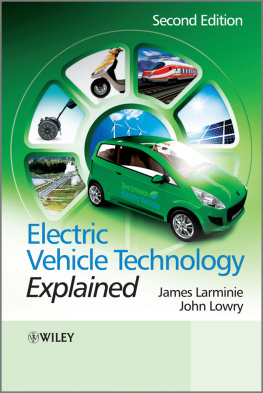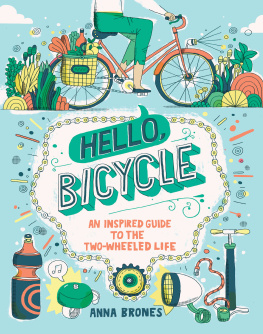Build Your Own Electric Bicycle
TAB Green Guru Guides
Do-It-Yourself Home Energy Audits: 140 Simple Solutions to Lower Energy Costs, Increase Your Homes Efficiency, and Save the Environment by David S. Findley
Renewable Energies for Your Home: Real-World Solutions for Green Conversions by Russel Gehrke
Build Your Own Plug-In Hybrid Electric Vehicle by Seth Leitman
Build Your Own Electric Bicycle by Matthew Slinn
Build Your Own Electric Motorcycle by Carl Vogel
Build Your Own Electric Bicycle
Matthew Slinn


Copyright 2010 by The McGraw-Hill Companies, Inc. All rights reserved. Except as permitted under the United States Copyright Act of 1976, no part of this publication may be reproduced or distributed in any form or by any means, or stored in a database or retrieval system, without the prior written permission of the publisher.
ISBN: 978-0-07-160622-6
MHID: 0-07-160622-X
The material in this eBook also appears in the print version of this title: ISBN: 978-0-07-160621-9, MHID: 0-07-160621-1.
All trademarks are trademarks of their respective owners. Rather than put a trademark symbol after every occurrence of a trademarked name, we use names in an editorial fashion only, and to the benefit of the trademark owner, with no intention of infringement of the trademark. Where such designations appear in this book, they have been printed with initial caps.
McGraw-Hill eBooks are available at special quantity discounts to use as premiums and sales promotions, or for use in corporate training programs. To contact a representative please e-mail us at bulksales@mcgraw-hill.com.
Information contained in this work has been obtained by The McGraw-Hill Companies, Inc. (McGraw-Hill) from sources believed to be reliable. However, neither McGraw-Hill nor its authors guarantee the accuracy or completeness of any information published herein, and neither McGraw-Hill nor its authors shall be responsible for any errors, omissions, or damages arising out of use of this information. This work is published with the understanding that McGraw-Hill and its authors are supplying information but are not attempting to render engineering or other professional services. If such services are required, the assistance of an appropriate professional should be sought.
TERMS OF USE
This is a copyrighted work and The McGraw-Hill Companies, Inc. (McGraw-Hill) and its licensors reserve all rights in and to the work. Use of this work is subject to these terms. Except as permitted under the Copyright Act of 1976 and the right to store and retrieve one copy of the work, you may not decompile, disassemble, reverse engineer, reproduce, modify, create derivative works based upon, transmit, distribute, disseminate, sell, publish or sublicense the work or any part of it without McGraw-Hills prior consent. You may use the work for your own noncommercial and personal use; any other use of the work is strictly prohibited. Your right to use the work may be terminated if you fail to comply with these terms.
THE WORK IS PROVIDED AS IS. McGRAW-HILL AND ITS LICENSORS MAKE NO GUARANTEES OR WARRANTIES AS TO THE ACCURACY, ADEQUACY OR COMPLETENESS OF OR RESULTS TO BE OBTAINED FROM USING THE WORK, INCLUDING ANY INFORMATION THAT CAN BE ACCESSED THROUGH THE WORK VIA HYPERLINK OR OTHERWISE, AND EXPRESSLY DISCLAIM ANY WARRANTY, EXPRESS OR IMPLIED, INCLUDING BUT NOT LIMITED TO IMPLIED WARRANTIES OF MERCHANTABILITY OR FITNESS FOR A PARTICULAR PURPOSE. McGraw-Hill and its licensors do not warrant or guarantee that the functions contained in the work will meet your requirements or that its operation will be uninterrupted or error free. Neither McGraw-Hill nor its licensors shall be liable to you or anyone else for any inaccuracy, error or omission, regardless of cause, in the work or for any damages resulting there from. McGraw-Hill has no responsibility for the content of any information accessed through the work. Under no circumstances shall McGraw-Hill and/or its licensors be liable for any indirect, incidental, special, punitive, consequential or similar damages that result from the use of or inability to use the work, even if any of them has been advised of the possibility of such damages. This limitation of liability shall apply to any claim or cause whatsoever whether such claim or cause arises in contract, tort or otherwise.
This book is dedicated to my girlfriend Heather, who I love.
About the Author
Matthew Slinn is an experienced research scientist and process engineer and has worked on several alternative energy transport applications. During his EngD at the University of Birmingham (U.K.), he worked on the biodiesel process and was sponsored by and worked at Green Biodiesel and BHR Biofuels. During this time he bought his first electric bicycle and quickly recognized the great possibilities for this new form of transport. The new skills he developed while fixing and upgrading this bike won him new jobs in the field of fuel cells and batteries. He worked on the prototype microcab fuel-cell vehicle and at Oxis Energy developing their lithium sulfur batteries. This book is the product of many years of accumulated knowledge.

Contents
Preface
Most people start off with electric bicycles by buying a commercially built one. This is good because it gets you riding straightaway. After you get over the initial novelty of the seemingly magical silent propulsion, you begin to think, Why cant it go faster? This is where this book comes in. It covers buying the best commercial electric bicycle for you, upgrading it for more power and speed, building your own more-powerful electric bicycle, learning new skills and how things work, repairing your electric bicycle when it breaks down, and adding modifications to improve it. The content is ordered to make it easy for the novice to jump in and get started and then learn by doing. Few tools are needed, and the skills, such as soldering, are easy to learn. This book will bring you to the forefront of electric bicycle technology and inspire you to take on new electric bicycle projects. Once you have read this book, you will want to keep it handy as a manual to guide you through any electric bicycle problems that you encounter or projects that you wish to undertake. Unlike cars, a separate user manual for each make and model of vehicle will not be needed. This book covers all makes of electric bicycles because the technology is simple and the same.
Matthew Slinn
Acknowledgments
I would like to thank the moderators of, and everyone who has contributed to, the Endless-Sphere Technology Forum ( www.endless-sphere.com ). Without them, this book would not be possible. Forums like this are an open source of ideas, where science and engineering happen at lightening speed. This wealth of knowledge and these new discoveries are a benefit to us all.
CHAPTER 1
Introduction
This book is a practical guide to electric bicycles aimed at the novice and intermediate riders of electric bicycles who are interested in learning more and getting the most out of their bicycles. It will be a fun and hands on approach that will cover buying, building, riding, upgrading, modifying, and maintaining your electric bicycle. Electric bicycles are far simpler than cars, essentially consisting of three main components (i.e., battery, controller, and motor) and so are much more user serviceable with a little know-how. Whether you use your electric bicycle for everyday commuting, shopping, racing, or just to show off and impress your friends, this book will help you to succeed.
Next page

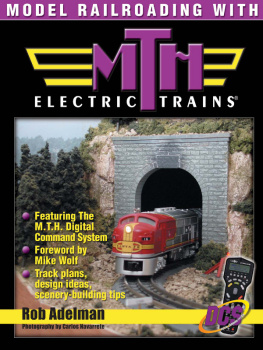
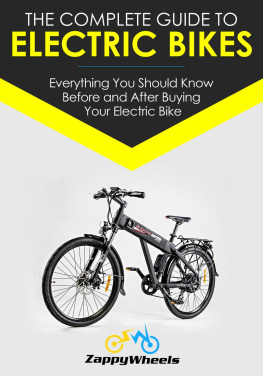
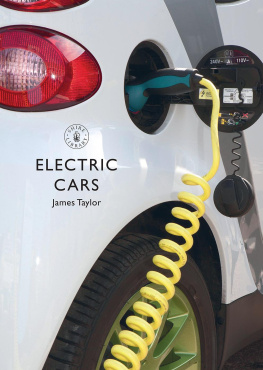
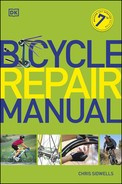
![Shanks - Essential bicycle maintenance & repair: [step-by-step instructions to maintain and repair your road bike]](/uploads/posts/book/235248/thumbs/shanks-essential-bicycle-maintenance-repair.jpg)
